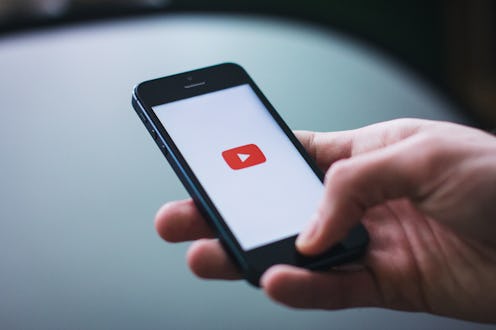Life
YouTube Updated The Policy That Restricted LGBTQ Content
In March, YouTube found itself embroiled in controversy when a number of LGBTQ content creators discovered that LGBTQ content was being blocked within YouTube’s Restricted Mode, without explanation. Now, YouTube has updated Restricted Mode policies regarding LGBTQ content, in order to prevent videos from being blocked without reason. The update also gives content creators a way to respond and seek review when their videos are blocked. Hopefully, these new policies will ensure that child-friendly LGBTQ videos remain accessible to the people who need to see them most.
Restricted Mode is a filtering feature that, when enabled, blocks mature content from YouTube. It’s often used by parents and places like schools and libraries to filter content so that children will not be able to access videos featuring profanity, violence, sex, and other "mature" topics.
In mid-March, several LGBTQ YouTubers noticed that their videos were being filtered out in Restricted Mode; in many cases, these blocked videos contained no mature content. As Gizmodo pointed out at the time, blocked videos included one of a lesbian couple reading their wedding vows aloud; a video by trans creator SeaineLove in which she simply talks about her experience as a trans person; and even a video from Rowan Ellis, in which she criticized YouTube’s filtering of LGBTQ videos. YouTuber NeonFiona, who sometimes uses videos to discuss and normalize bisexuality, said that her videos touching on bisexuality and other LGBTQ issues were blocked, while her videos without an LGBTQ bent weren’t.
A number of content creators pointed out the blocking of these videos seemed to suggest that discussions or portrayals of LGBTQ life are, simply by virtue of being LGBTQ, somehow inherently “inappropriate” and unfit for children. “[T]here is a bias somewhere within that process equating LGBTQ+ with ‘not family friendly,’” Rowan Ellis told Gizmodo. No matter “how innocent or unintentional the ‘hows’ or ‘whys’ are,” she argued, “the effects cannot be ignored.” Blocking LGBTQ videos in Restricted Mode means that people who often use the internet in libraries and schools — i.e. children — lack access to content that could be hugely important to them. “[YouTube is] often the first place many LGBTQ youth around the world see themselves and their stories shared and celebrated,” YouTuber Tyler Oakley told Teen Vogue. “Blocking LGBTQ creators and content is harmful, plain and simple.” Following the controversy, YouTube issued a series of apologies, and promised to look into the matter.
On Friday, YouTube announced that it has updated its policies for filtering videos in Restricted Mode, in order to prevent innocuous LGBTQ videos and other family-friendly content from being blocked unnecessarily. “After a thorough investigation, we started making several improvements to Restricted Mode,” Johanna Wright, YouTube VP of Product Management, wrote in a statement. “On the engineering side, we fixed an issue that was incorrectly filtering videos for this feature, and now 12 million additional videos of all types — including hundreds of thousands featuring LGBTQ+ content — are available in Restricted Mode.” In addition to improving the filtering system, YouTube has also made an online form available so that people can report when a video has been incorrectly filtered.
Wright emphasized that sexual orientation and gender identity are not factors in the filtering process, writing, “We want to clarify that Restricted Mode should not filter out content belonging to individuals or groups based on certain attributes like gender, gender identity, political viewpoints, race, religion or sexual orientation.”
Wright points out that, given the massive number of videos uploaded to YouTube everyday, “Restricted Mode will never be perfect.” Hopefully, however, these updates to YouTube's filtering system will improve its ability to distinguish what is and isn’t “inappropriate.”
